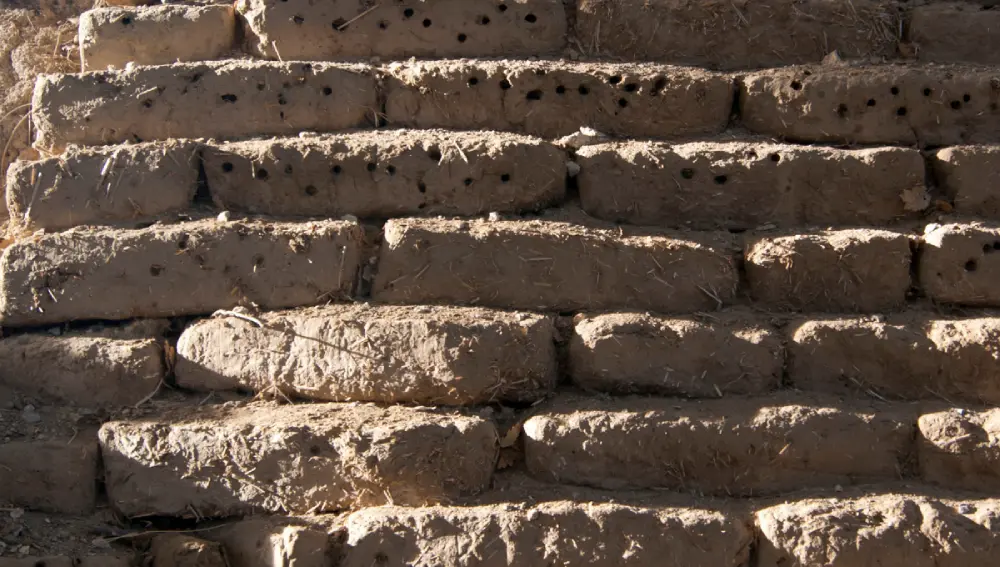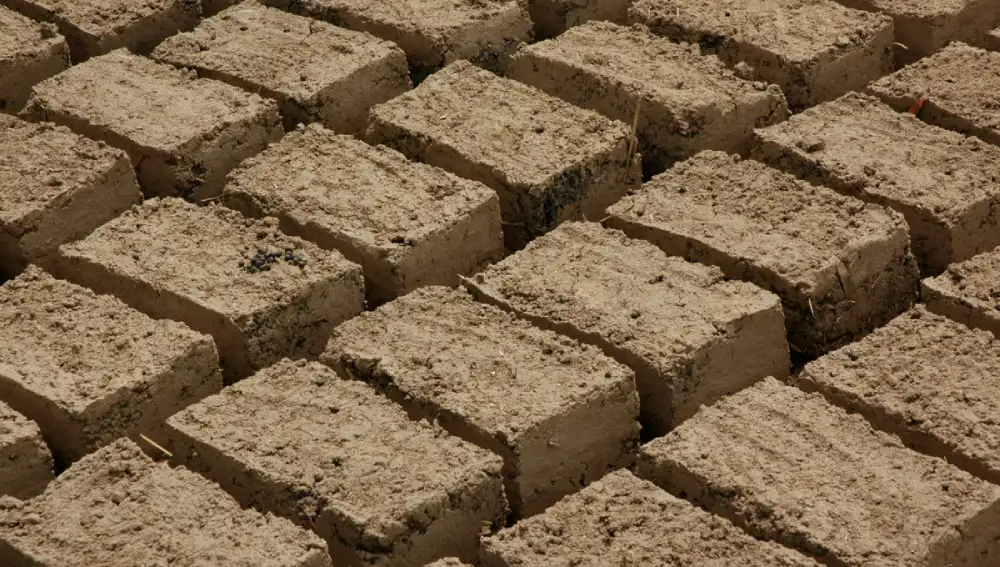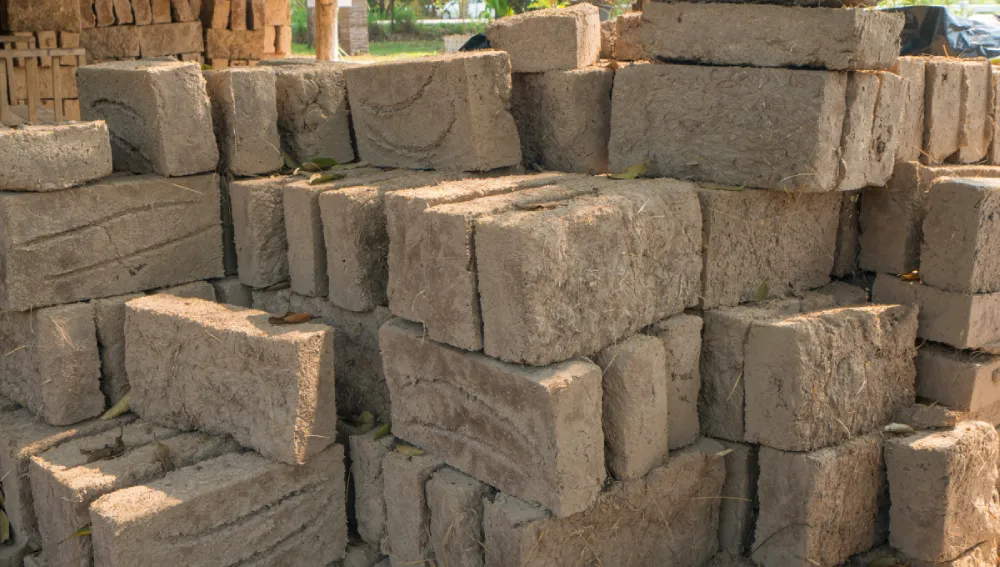Clay bricks are used in a wide range of construction. It is important to understand the importance and process of clay bricks that best suit your project. Leave the hassle and read a blog to become an expert in clay brick.
What are Clay Bricks?

Clay bricks are rectangular blocks of clay that are used for construction purposes. These bricks are made when clay, along with other materials like sand, is heated at high temperatures.
Clay bricks have been used for several thousand years and are known for their durability and strength. The standard dimension of clay bricks is 190×90×90 mm. The brick is usually red or brown in color, depending of the type of clay used for the process.
Clay Bricks: Types
Different types of clay bricks vary depending on the construction. The types of clay bricks are listed below.
First-class Clay Bricks
First-class bricks are top in quality. These bricks have a uniform shape, size, and colour and are free from defects. These clays are fixed into the table moulding and are burned in large kilns.
These bricks are used for long-lasting structures and exterior-facing walls. The general dimensions of first-class clay bricks are 190 ×90×90 mm.
Second-class Clay Brick
The second-class bricks lack regular shape, size, and colour. As the name suggests, these bricks are of lower quality compared to the first-class bricks. These bricks undergo a ground moulding process and are burnt in kilns.
These bricks can be used for bearing loads but cannot be used for exterior walls. The general dimensions of second clay bricks are 190 ×90×90 mm.
Third-class Clay Brick
Third-class clay bricks are of poor quality. They are irregular in shape, colour, and size and have cracks. These clay bricks also have defects and related distortions.
The bricks are burned in clamps and are not suitable in places with rainy weather. The bricks can be used largely in landscaping. The general dimensions of second clay bricks are 190×90×90 mm.
Clay Bricks: Properties
There are several properties associated with the clay bricks.
- Size and Shape: The size of the clay bricks varies depending on the purpose. But the common size is 7.48×3.54×3.54 inches. The shape of the clay brick is rectangular, which is useful for construction.
- Color and Texture: The colour of the brick depends on the clay and the type of burning process used. The common brick colours include brown, yellow, and red. The texture of the brick should be smooth and round.
- Hardness: Hard bricks can withstand any damage. These clay bricks should be long lasting and are long-lasting.
- Water Absorption: The water absorption capacity of clay bricks differs based on the type of clay brick and its manufacturing process. The average water absorption rate of face bricks is 4.5–12% and for clay plaster bricks, it’s around 12–20%.
- Thermal Conductivity: Thermal conductivity determines a brick’s capacity to transfer heat. Bricks with low conductivity help to maintain a standard temperature in the building.
Clay bricks: Manufacturing Process

Preparation of Soil
The soil under 200 mm is removed as it contains impurities and loose soil not suitable for use for construction. The clay is obtained only after digging and spreading the soil at 600 to 1200 mm.
Cleaning
In the process of cleaning, the soil is washed and screened to remove any pebbles or any non-clay materials. This process is time-consuming and expensive. After cleaning, the lump of the remaining clay is crushed into powder.
Weathering
The powdered soil is left to dry in the atmosphere as it can influence the plasticity and strength of the soil. The time of the process normally depends on the type of soil used; however, generally, they are left for a week.
Blending
In the process of blending, calcareous clay and sand are added to increase the soil quality. The ratio for fire clay includes sixty percent fire clay, twenty percent grog, and twenty percent silica or flint.
Tempering
Tempering is done using cattle or human feet. Water is added to make sure the earth is mixed uniformly. For soft plastic clays, about 20 to 30% of water is added. But, to prepare a clay brick of number 20,000, the soil is tempered using a pug mill.
Brick Moulding
The moulding of brick size should be followed according to the Bureau of Indian Standards. The general size of the brick is 190×90×90 mm. With mortar thickness, the size of the bricks becomes 200×100×100 mm.
Brick Drying
The moulded bricks will be damaged if they are burned directly in a fire. The bricks are dried either naturally or artificially for two weeks.
The natural process of brick drying includes sun-dried and air-dried bricks. The artificial drying of bricks includes specific dryers that receive heat from the furnace.
Burning of Brick
During burning, the brick undergoes both physical and chemical changes. Clay bricks are usually heated at temperatures between 900-1200°C. The brick is mixed with silica and alumina to make sure that the brick is strong and free from cracks.
Sorting and Transportation
The bricks are then sorted, packed, and transported to desired locations.
Clay bricks: Advantages
The advantages of clay bricks include:
- They are secure and an investment for a lifetime.
- They are energy-efficient.
- They require low maintenance.
- They offer a wide range of colours and styles.
- They are an environmentally friendly option.
Clay bricks: Disadvantages
The disadvantages of clay bricks include:
- High cost
- Durability issues
- Require high maintenance
- They don’t offer a variety of aesthetic options.
Conclusion
Clay bricks play an important role in construction. The bricks have evolved along with technology. The making of clay bricks goes through different processes before it reaches its purpose. Clay bricks can give a house or a commercial space the desired aesthetic features the buyer is looking for.
FAQs
Clay bricks are made by mixing water and clay at specific ratios.
In construction, clay bricks are highly durable, low maintenance, and provide insulation.
The average lifespan of clay bricks is five hundred years; however, they can last up to six hundred and fifty years.
A simple way to clean a clay brick is with plain water. But soap can also be used to clean clay bricks.

